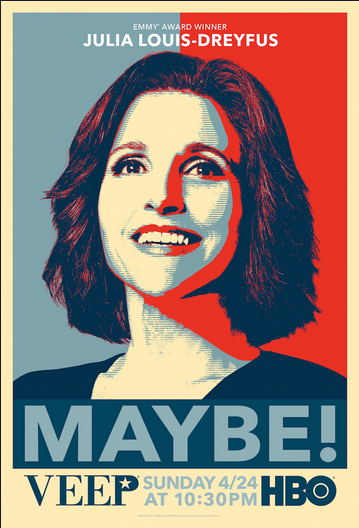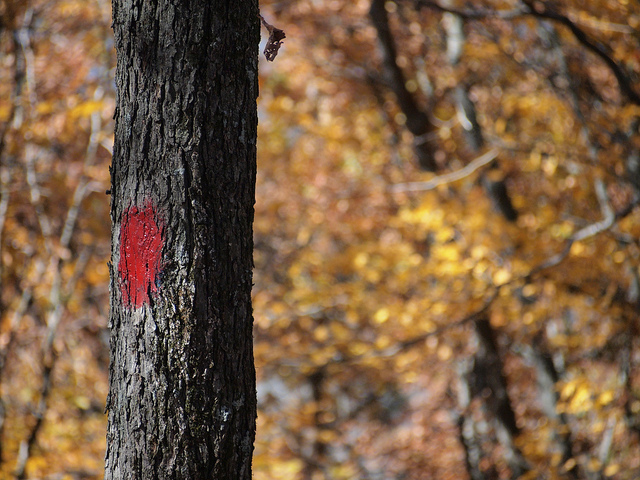Written under the supervision of Erik Roraback, PhD, and submitted on 19 May 2015, this essay was part of my total coursework at the Department of Anglophone Literatures and Cultures at Charles University’s Faculty of Arts. The essay is published with the kind permission of the faculty.
Utopian Features in M. Night Shyamalan’s The Village
At the time of its theatrical release, M. Night Shymalan′s 2004 film The Village was a hotly anticipated title. The director, who had made an impression on critics and general audiences alike with his wide release debut The Unbroken and then rose to international stardom with The Sixth Sense and Signs, had a lot to live up to after all. Unfortunately the film did not particularly astound the audiences in the end, and for many it became the first step of Shyamalan′s artistic decline. The mixed to negative reviews were at least partially due to the film′s misleading promotional campaign, which made it seem as though The Village was an action-packed “monster flick” (a type of movie which it decidedly is not), and also due to its twist ending, which was considered underwhelming by many. A good number of reviewers also pointed out that the allegorical nature of the story – As Miriam Jordan and Julian Jason Haladyn rightly point out, “Shyamalan presents a critique of the dangers of attempting to attain a state of security through the simulation of terror – a critique that directly relates to the political context in which the film is produced, specifically the climate of fear in the United States following the terrorist attacks of September 11“ (Jordan and Haladyn, 177). – felt unnecessary, forced and simplistic.
There is one aspect of the film, however, which most writers only mentioned in passing but almost never developed; a statement of fact which was seldom elaborated: Covington Woods, the eponymous village which provides the setting for most of the running time of the film, is for all intents and purposes a utopian society, that is a community of people essentially inspired by Thomas More′s Utopia. Utopias in general have a multitude of definitions nowadays. Fátima Vieira for example explains in The Cambridge Companion to Utopian Literature, that the term “came into being to allude to imaginary paradisiacal places” (Vieira, 4), while Encyclopedia Brittanica defines it as “an ideal commonwealth whose inhabitants exist under seemingly perfect conditions” (Encyclopedia Brittanica). The term is certainly applicable with regard to The Village, as for instance Miriam Jordan and Julian Jason Haladyn point out that, “utopian ideals motivate the existence and constitution of the self-isolated community of Covington Woods“ (Miriam Jordan and Julian Jason Haladyn, 175) What are the specific links that bind Shyamalan′s The Village and Thomas More′s Utopia, though, and if the film truly does present an example of a utopian community, what kind of utopia is it in particular? These are the questions to which we will attempt to find answers in this essay.
Momentarily setting aside the frame narrative of Utopia, in which Thomas More presents a discourse between Raphael Hathloday and Peter Giles, the book opens with a description of the geography of the land of Utopia and its systems of fortification. Talking at length about its “coast [which is] fortified, both by nature and art” (More), the “tower, in which a garrison is kept,” and most importantly about the town “compassed with a high and thick wall,” More evokes strong feelings of isolation and seclusion. How telling it is, then, that Shyamalan copies this opening when he has one of the first scenes in The Village showing the wall which separates the town from the forest, the guard towers, and the guards themselves standing near the edge of the woods. The director comes back to this motif of isolation on numerous occasions in the film – what with the characters walking or standing near the border and looking eerily into the woods –, but he addresses this most openly near the very end of the film in the scene with the two guards. The senior guard lectures his younger colleague in this scene on the importance of not allowing anyone to cross the border: “No one is allowed to go in there and disturb the animal sanctuary. […] Maintain and protect the border” (The Village). Of course, access to More′s island of Utopia is not so strictly prohibited (for example trade relations with the surrounding countries are encouraged) but the fact that Peter Giles and others have never heard of this wonderful land is suggestive of Utopia′s somewhat secluded nature.
Apart from the sense of isolation, there are other details which seem to have been taken by Shyamalan from Utopia and planted into The Village. Of the most prominent ones we can mention the general aversion to violence, bloodshed, and cruelty. More writes of the Utopians that, „they look on the desire of the bloodshed, even of beasts, as a mark of a mind that is already corrupted with cruelty, or that at least, by too frequent returns of so brutal a pleasure, must degenerate into it,” and, crucially, the same can be told about the inhabitants of Covington Woods. This is demonstrated not only by the central color symbolism of the story (the villagers fear the color red, which is reminiscent of blood) and the fact that they reproach Those-We Don’t-Speak-Of for, “they are meat eaters,“ but also by the final twist in which it is revealed that the whole community functions as a sort of safe haven, having been founded in reaction to the elders losing their loved ones to violent crimes.
Additionally, while drawing a parallel between the clothes the two communities wear may arguably be considered rather insubstantial, it is worth noting that Shyamalan does indeed seem to have taken to heart More′s description “throughout the island they wear the same sort of clothes, without any other distinction except what is necessary to distinguish the two sexes and the married and unmarried.” After all his female characters are invariably clad in dresses and the male ones in shirts, jackets and trousers – a style of clothing which, according to Lauren Coats, is supposed to be reminiscent of the quasi-Puritan setting of the story (Coates, 360).
Religion is actually another important structural link between The Village and Utopia for both works more or less feature monotheistic societies. While the presence of Christianity is not surprising in Shyamalan′s film given that the viewers are meant to believe it takes place in the late nineteenth century America (the date on the tombstone in the opening of the film quite clearly states that the year is 1897), it should be noted that More′s vision of the religious landscape on the island of Utopia is quite similar to it. To be fair, he does write that, “there are several sorts of religions, not only in different parts of the island, but even in every town,” and that „no man ought to be punished for his religion,” but at the same time he has Raphael to admit that, “all agree in this: that there is one Supreme Being that made and governs the world.“ Fully monotheistic society or not, it is not difficult to imagine the towns in Utopia functioning in a very similar fashion as the cinematic village.
There is one more aspect of the Utopians′ approach to religion that seems to ring true to the inhabitants of The Village: the pursuit of joy. When describing the four religious principles of the island nation, More writes that, “the soul of man is immortal, and that God in His goodness has designed that it should be happy.” This belief that it is, “the maddest thing […] to renounce the pleasures of life,” is reflected, for instance, in one of the earliest scenes in the movie in which two young women are shown laughing and apparently enjoying themselves while doing such a mundane chore as sweeping the floor arguably is. Another character refers to this principle later in the movie as well when she says during one of the Elders′ meetings: “We didn′t have The Flight of the Birds last year and I, for one, missed it desperately. […] I am fond of it.”
Clearly, if it were not for the constant threat emanating from the woods the community would be much happier. Perhaps it is precisely because of the constant threat, though, that the people are shown to be appreciative of even the most insignificant daily affairs. After all, as Herman Melville argues in the eleventh chapter of Moby Dick: “There is no quality in this world that is not what it is merely by contrast” (Melville).
It is equally possible, though, that this juxtaposition of fear and joy is a form of criticism on Shyamalan′s part – his criticism of the utopian establishment which he created in this film. After all, it may be difficult to view Covington Woods as a model of perfect society when most of its inhabitants are being deceived and frightened into staying there. As Lauren Coats writes, “the Elders [pledge] never to return to the towns. Their children, however, are not bound by this compact” (Coates, 360). In spite of that, Raffaella Baccolini adds, “as a community [Covington Woods] rests on deception rather than shared consensus [due to the fact that] the second and third generations […] remain in the village because of fear” (Baccolini). This point alone may be enough to substantiate the claim that the community presented in The Village may in fact be a model of the so called “critical utopia”.
Critical utopia is a model of utopian society whose central concern, as Tom Moylan explains, “is the awareness of the limitations of the utopian tradition, so that these texts reject utopia as blueprint while preserving it as dream” (Veselá, 272). This limitation can be perhaps best exemplified in The Village on the various medical emergencies which the characters have to overcome. After all, in the very beginning of the film, as the narrator′s voice is uttering the words, “We may question ourselves at moments such as these. Did we make the right decision to settle here?” we are watching the funeral of a young boy – a young boy who, as it is made apparent at the end of the film, did not need to die. His survival would have necessitated that the Elders abandon the lie and send someone to fetch the medicine the boy needed, which they quite obviously had not done. The same kind of situation is repeated, of course, after the character of Lucius is stabbed and his life hangs in balance. The fact that Ivy is indeed sent to get the medicine for him is secondary for that decision is not only made impulsively by her father but also to the great chagrin of the remaining elders. Thus, without the first-time viewers even realizing it, the ideal society is depicted in a rather critical light for it is shown that the elders would, more often than not, have other members of the community die of diseases rather than break the utopian illusion.
Another way in which Shyamalan depicts Covington Woods as a critical utopia has to do with his approach to money. The community in Covington Woods not only uses no money but it is also made apparent in the conversation between Ivy and her father that while the older generations have an extremely negative stance towards it, the younger generations do not even know what money is: “You do not know of money,” he says, “It is not part of our life here. Money can be a wicked thing. It can turn men′s hearts black – good men′s hearts.” How ironic, then, when the viewers are told at the end of the film that the very existence of the community which so adamantly comes out against money was made possible only by the extreme fortune inherited by Ivy′s father. In other words, if it were not for the “dirty” outside money, this “pristine” moneyless society would not exist. Lauren Coats, approaching the issue of capital from a slightly different point of view, essentially supports this claim when she writes:
What appears at first to be a community grounded in self-sufficiency and thriftiness can instead only come from a surfeit of capital. The Windsor and Shaker furniture, seemingly indicative of a proper historical moment […], becomes expensively collected or reproduced furniture after the narrative turn. […] The furniture′s place in the film thus materializes the community′s dependence on non-utopian capitalist machinery, at the same time that it reproduces white capitalist privilege of Covington Woods itself. (Coates, 365)
Apart from the deception and fear, the issue with unnecessarily insufficient health care, and the questionable relationship with money, there is one more area which may potentially be indicative of Shyamalan’s critical approach to the film’s utopian community: its system of governance. While it is possible to assume, as Coates points out, “that the community begins as a model of consensual government, formed when the founders all agree to leave Philadelphia together to start their own polity“ (Coates, 363), that model of government seems increasingly rigid as the story develops, and eventually even begins to appear somewhat totalitarian in its nature. The main problem is that all the decisive power in the community lies in the hands of the few elders who – in spite of their facade of utter equality to the remaining members of the commune – need to be consulted on every matter and give their permission to every affair. For obvious reasons they for instance refuse to give Lucius permission to go through the woods to one of the presumed neighboring towns; they are shown on two separate occasions to have been asked to give their younger fellows permission to marry; and near the end of the film they are depicted as arguing about giving Ivy permission to leave the village in search of medicine. While in the beginning of the film their behavior seems kind and their actions just and founded in their duty to protect the villagers, in hindsight it is apparent that they may be much more cunning and their nature less benevolent than that.
Importantly, though, even More’s Utopia is far from perfect in this respect. For instance, in the chapter “On Their Trades and Manner of Life” More writes, “among the Utopians all things are so regulated that men very seldom build upon a new piece of ground,” and later on when discussing the topic of travelling in Utopia he adds: “If any man has a mind to visit his friends that live in some other town, or desires to travel and see the rest of the country, he obtains leave very easily. […] If any man has a mind to travel only over the precinct of his own city, he may freely do it, with his father’s permission and his wife’s consent.” To be fair, More does not include these details to be critical about his paradisiacal literary invention or to suggest that the regulations in Utopia are so strict that its people feel shackled by them. In fact, he would probably disagree with any critical stance towards this subject matter. As Logan and Adams explain, “More’s own society was rigidly hierarchical and highly regulated, so Utopia may not have seemed as restrictive to him as it does to us” (George M. Logan & Robert M. Adams, xii). In other words, as far as More was concerned, asking for a permission slip to travel to a neighboring city was an uncritical example of personal freedom. It is only in The Village that such necessity suddenly gains somewhat ominous undertones.
To conclude, while it was apparent to most viewers and reviewers that M. Night Shyamalan’s The Village was meant to depict a utopian community, an island of peace in a sea of violence, it is arguable that Shyamalan himself constructed this community not as a utopia but, more accurately, a critical utopia. After all, how could an attempted murder even occur in any proper “imaginary paradisiacal place”, even if that attempted murder was at the hands of a mentally challenged person who may not have been absolutely aware of the consequences of his actions? It is therefore questionable whether the viewers should still see the ending of the film, in which the blind girl returns to the village with the medicine having promised not to tell anyone of the world behind the wall, in such positive light.
Bibliography:
Baccolini, Raffaella. „Dystopian Fears, Utopian Nightmares: Reflections on M. Night Shyamalan´s The Village.“ Mediazioni 15 April 2015. 15 April 2015 <http://www.mediazioni.sitlec.unibo.it/index.php/no2-anno2006/48-dossierno2-anno2006/129-dystopian-fears-utopian-nightmares-reflections-on-m-night-shyamalans-the-village.html>
Claeys, Gregory, ed. The Cambridge Companion to Utopian Literature. Cambridge: Cambridge University Press, 2010.
Melville, Herman. Moby Dick. Accessed via Project Gutenberg. <https://www.gutenberg.org/files/2701/2701-h/2701-h.htm>
More, Tomas. Utopia. Work Accessed via Project Gutenberg 19 April 2015. 19 April 2015. http://www.gutenberg.org/files/2130/2130-h/2130-h.htm
More, Thomas. Utopia. George M. Logan & Robert M. Adams, eds. Cambridge: Cambridge University Press, 2003.
The Editors of Encyclopaedia Brittanica. „Utopia.“ Encyclopaedia Brittanica. 7 May 2015. 7 May 2015. http://www.britannica.com/EBchecked/topic/620755/utopia
The Village. Prod. Blinding Edge Pictures. Dir. M. Night Shyamalan. 2004.
Veselá, Pavla. “Neither Black Nor White: The Critical Utopias of Sutton E. Griggs and George S. Schuyler.” Science Fiction Studies 38 (2011): 270-287.
Weinstock, Jeffrey Andrew, ed. Critical Approaches to the Films of M. Night Shyamalan. New York: Palgrave MacMillan, 2010.





Napsat komentář